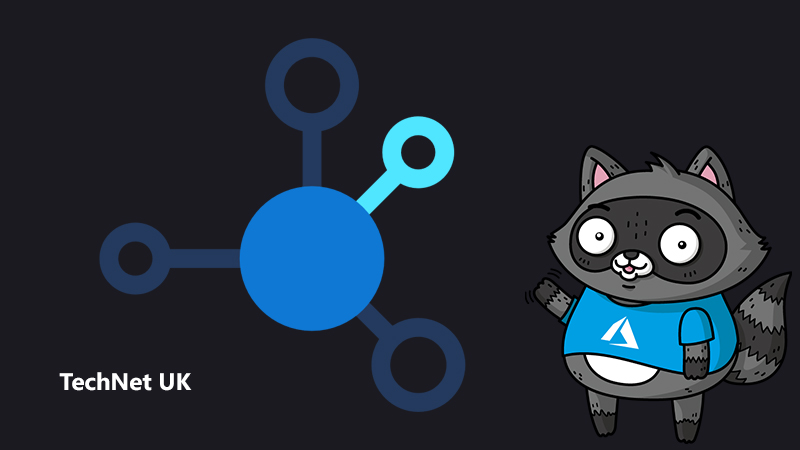
How Fusion Development and advances in AI tools are helping developers get apps to market quicker
We’ve been fortunate to work with Power Platform and other associated technologies for a few years now. It’s clear to see the evolution of fusion development within the Microsoft ecosystem has been remarkable and it’s exciting to be a part of this revolution.
In this blog post, Carl Cookson, Matt Beard and myself will share our opinions on the latest advancements in low-code platforms, AI and machine learning, and how these technologies have transformed the way we develop and deploy business applications.
The rise of the low-code platform
We all know Power Platform has been a game-changer for developers, enabling citizen devs to create custom business applications without extensive coding knowledge. Power Apps and Power Automate have made it easier than ever to create, deploy, and manage applications across various devices and platforms. With Power Apps, we can quickly build custom user interfaces and integrate data sources, while Power Automate allows us to automate tasks and streamline workflows.
These low-code platforms have also democratized application development, allowing citizen developers to create applications and contribute to innovation. Giving the power to the people who often have a clearer vision of what the business needs from their technology and data.
How is AI helping?
The integration of AI and machine learning into business applications has become increasingly important and Microsoft’s AI and machine learning tools, Azure Machine Learning and Cognitive Services, have made it easier for developers to incorporate these features into their applications. By incorporating AI and machine learning into applications, we can create intelligent applications that can automate tasks, provide insights, and improve decision-making at speed and scale. But lets look at this from a Fusion Development perspective.
Carl Cookson says that a fusion approach is essential as the citizen developers know what they need from the data and information, and have the best ideas on how to make that data usable across the business. Carl comments “AI is now additional empowerment really, it’s able to put your data into context in a way you may not have imagined.
“In a business sense, it’s able to give you insights into your business that you may not have seen, enabling you to make better decisions, and make them at pace. And putting the power of a conversational AI based on your data into the hands of a low-code developer gives the business users the ability to ask the most valuable questions, that a professional developer may not consider, such as ‘why did we lose that opportunity’”.
And given that a citizen developer can now, with the use of current Power Platform plus AI tools, build pretty much any app they want, this means that most of the grunt work is done off the bat. This allows professional developers to get to the real technical requirements of the app and use their knowledge and experience to get it scalable, review the data model, and apply the relevant best practices.
As Matt Beard says “Bear in mind that I code defensively because of security issues such as SQL injection. So, potentially, if I got AI to write some code for me, it may not write it defensively enough to handle that, leaving me exposed. A citizen developer may look at the code and not understand why it seems longer or is written in that way, but often it’s for safety reasons.
“AI is a great tool for getting things started, and you could use it to do maybe 50% of the basic work, but you would still need to check it and make sure it’s going to work in the best and safest way possible.
This is generally down to experience and, at times, learning the hard way. Over time, it’s something that that most pro developers learn and begin to account for. But it’s a giant leap forward from the days when you had to start ‘from scratch’”.
So, giving greater power to the citizen developer to bring their business expertise to the fore and build the ideas to create the apps. While they build the app, or at least get it most of the way there, developers can review, refine, apply knowledge and tools to get the app into a scalable format that can then be rolled out.
Carl adds “It’s the pro developer providing building blocks rather than a solution that is part of that fusion team, right? So there’ll be a pro developer doing the API, there’ll be a pro developer doing the controls, there’ll be a citizen developer, business technologist taking that and understanding how to use it in a business context.
“We’ve gone from waterfall in the 80s and 90s where someone decided ‘this is an app and this is what it’s going to do’, taking 18 months to build and by which time the business has moved on so it was often not useful any more. Then we moved to agile, where the business were involved in the decision making and design, which drove a more collaborative approach. Now we have fusion teams, where you’re allowing the business to play with the building blocks and create what they want, enabling them to rapidly see the conclusion of that”.
It’s the speed with which a fusion team can conceive, design, build and deploy an app within the Microsoft ecosystem that makes this approach so valuable.
Citizen Developers bring more than just the ideas
Another area where the input and graft from citizen developers is so valuable in terms of the speed of getting apps out to the business is with the user experience. Making the user journey efficient so that apps become a seamless part of their day should be the main goal. But often, as Carl adds, someone who is not a professional developer “might have a fantastic idea for an app, and they’ve got an idea of how it should work, but they can’t quite ‘get there’.
“…especially when dealing with sales people, for example. They tend to have everything in their head and are very much minimal in terms of interaction with systems because they’re best at talking with people. As soon as you put a process in place, it’s got to be something that both helps them and reduces their interactions, so that it actually gives them something back in return for the ‘pain’ that is data entry”.
This kind of citizen input is invaluable, not least in terms of saving time and resources by building something that users, quite simply, will use.
The role of low-code in reducing the workload of professional developers
Carl says that most places are the same in that they will have a list of projects they want to cover. If you look at that list, you’ve usually got a backlog of stories and ideas that you could build an application to do. Sadly, there will be some items that never come to the top of the priority list because, although they may be of high-worth in terms of benefit to the business, they are too simple to justify a developer spending serious time on.
So if you can give someone else in the business the tools, the data and the APIs to enable them to build those kinds of projects, you are freeing up the professional developers to focus on the parts of those projects, or the other projects, that are complex and require a specialist approach. “It’s clearing the way for them [professional developers] to spend time on the things that they’re good at”.
Again, its saving time for the developers in a different way.
So what should professional developers do in terms of allowing the AI and Fusion approach to evolve?
Both Carl and Matt agree that professional developers have nothing to fear from AI or greater enablement of the citizen developer, but that we all have a responsibility to keep learning and make sure we are always using the most current tools to be as efficient as possible.
Carl posits that the “demand for people in technology will be people who can have a more rounded approach, like being more functional in their approach and to understand business.
“The professional developers have always had an attitude of ‘evolve, learn.’ No one could have imagined Power Apps back in the old Cobol, blue screen days. Things are always evolving, and our expectations of technology and life is that things will keep evolving”.
Matt says the same, that a lot of developers “have a set-up that works, a language you like on a specific version you like to write with all the time, even though there is a newer version out. That’s where AI will overtake you – because AI doesn’t have to re-train or upskill its learning, like a person would.
“So far it hasn’t had a huge impact yet, I think because people will still check with me to ask ‘Is it [the AI generated code] right?’
“For me, the next big thing is more likely to detect whether something was generated by AI. I wouldn’t want my salespeople to spend time chatting to a bot, because a bot isn’t going to buy anything…”.
Which is a fair point…
“There is always a balance of complex code that does the job really well, and auto-generated code that might do the job, but slowly. You need to be able to balance between the two.
“And with any code you need someone to make decisions, which AI can’t do (yet). Humans are required when there has to be a level of accountability because otherwise it’s too easy to blame the AI, but you need to have someone with whom the buck stops.”
How fast can we make it?
The evolution of fusion development within the Microsoft ecosystem has made it easier and faster for developers to create applications that meet specific business requirements and user needs. The low-code platforms, AI and machine learning tools have all contributed to this evolution, and will undoubtedly continue to do so.
It seems that it’s essential for developers of all kinds to embrace these technologies, to continue to accelerate innovation and create applications that have a significant impact on the business. Plus, we need to find more and more ways to incorporate the new tools and AI capabilities to continue to speed up how we conceive, build, develop and release apps to better serve the businesses we are supporting with this technology.
Perhaps one day we can see apps developed with sophisticated code, built with scalability and an incredible user experience within seconds of the idea being conceived. It’s good to have goals.




